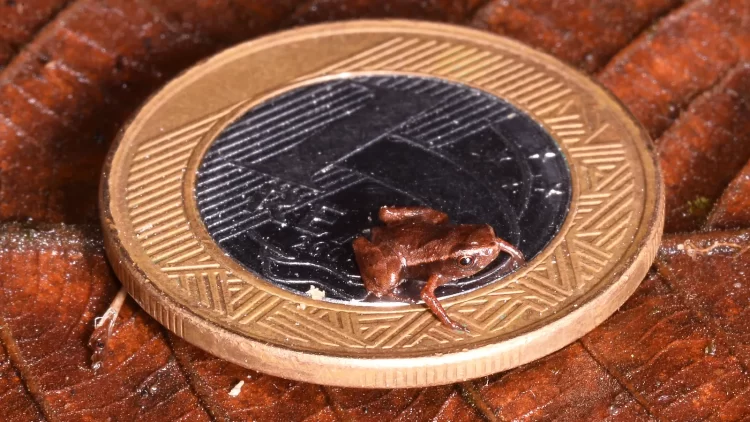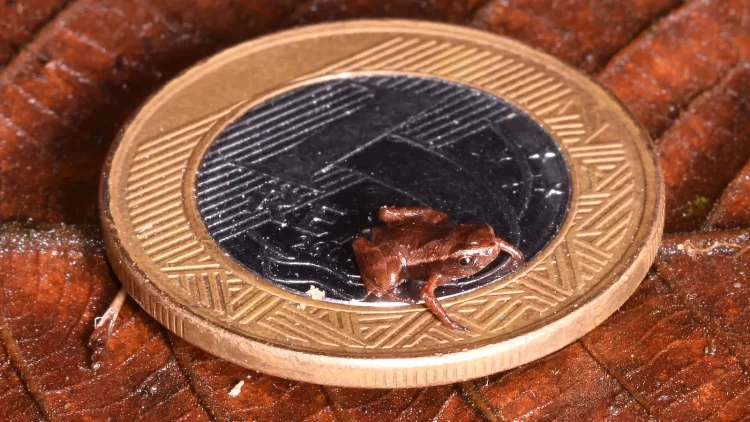The Brazilian flea frog (Brachycephalus pulex) measures only between 7 and 8 millimeters in length, which likely makes it the smallest vertebrate on Earth.
In 2011, Mirco Solé, a researcher at the State University of Santa Cruz in Brazil, discovered the tiny Brazilian flea frog, an amphibian so small that it could comfortably fit on a small coin. The discovery made news headlines in the scientific community, but because of a small available sample, there was simply no way to provide conclusive information regarding the frog’s size. Now, over a decade longer, a team led by the same Mirco Solé has published an extensive study on the elusive frog species that can only be found on two forested hillsides in Bahia, Southern Brazil. It shows that the flea frog is a very likely candidate for the title of ‘world’s smallest vertebrate’.

Photo: Renato Gaiga
For their new study, researchers ventured to the tiny frogs’ habitat once more to capture a greater number of specimens, 46. They measured them, checked their gonads to determine their sexual maturity, and checked for the presence of vocal slits, which only male frogs have. They found that males measured just over 7 mm in length, while females were a bit larger, at just over 8 mm.
Interestingly, the smallest adult specimen measured during the research was just 6.45 mm long, which makes it 30 percent smaller than the previous smallest frog ever observed. While there could be even smaller frogs out there, researchers point out that the smallest individuals usually suffer from deformities, such as fewer toes, or a complete lack of ears, which suggests that they would likely not be able to survive if they were even smaller.
One of the quirks of the Brazilian flea frog is that it struggles with something that frogs are usually great at – jumping. And it’s all because of their size! Because they are so small, they can’t control their vestibular system, which controls stability, so they tend to lose their balance when they leave the ground.
It’s worth pointing out that flea frogs are likely the tiniest vertebrates by linear measure, but by mass or volume, some fish species “would likely claim the title, as they are very narrow-bodied and slender, whereas the frogs are rather round,” according to Mark D. Scherz, curator of Herpetology at the Natural History Museum of Denmark













